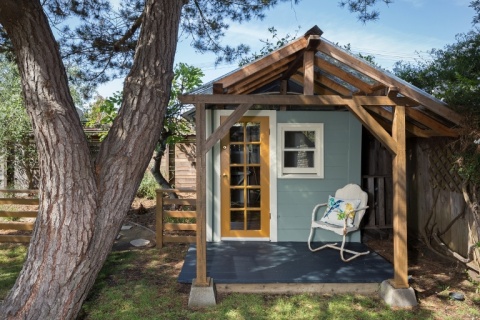
Coach houses pass committee
You are here
New rules that allow “coach houses” in Ottawa were approved by Planning Committee this morning. Though not necessarily the most contentious issue with which Council has dealt this term, there was nonetheless some significant discomfort in some quarters about the implications of the new rules in urban communities, and I wanted to take this opportunity to address why I voted in favour of the proposal.
In short, “coach houses” are small homes that would be permitted to be built in the rear yards of existing houses. Cities in Ontario are under order from Queen’s Park to develop a planning framework that permits these, part of the toolkit the Province is using to address affordable housing.
Staff proposed, and Committee accepted, modifications to the zoning by-law that would allow coach houses under certain conditions, the most important of these being that they cannot exceed 40% of the yard, have a footprint greater than 80 square metres, and can’t be more than one storey in the urban area. The land on which they sit can’t be severed from the rest of the lot, and the units must be serviced from the primary dwelling.
We had a lengthy debate about the advisability of passing these rules today. Some community advocates have expressed concerns that these will proliferate and further reduce our urban tree canopy and eliminate greenspace. Why, they asked, would we have worked so hard to win increased rear-yard amenity space, just to fill that in with coach houses?
It’s a legitimate question, and one that I was at pains to explore with the delegations and staff in our meeting.
Ultimately, my decision to support the new rules came down to two considerations. First, accessory dwellings such as garages, sheds and other outbuildings are already allowed to cover 40% of the yard. In terms of built form, they aren’t quantitatively different from what homeowners can already do. While there was some question in my mind going in to today’s meeting about whether new coach house rules might spur a backyard building boom to add living space, it became clear that people are already free under the rules to do so today if they wish.
The second consideration is that I don’t believe it’s likely we’ll see many of these built in neighbourhoods like Champlain Park where we heard significant concern. The homes being built in neighbourhoods like Westboro and Champlain Park are generally very expensive, and it’s unlikely – at least in my mind – that people building $1.2 million or more houses will want to share their yards with another resident. The price tag to build a coach house is pretty significant – with estimates of around $80,000 floated. I don't see we'll see a rush to build these.
One community consideration still outstanding, and about which I am still uneasy, is the question of trees. Both I and the community reps from whom we heard are concerned that if this housing form does proliferate, we could exacerbate the current crisis with respect to mature trees. While sheds, garages and other structures are generally slab-on-grade, new coach houses might very well have foundations. We know from bitter experience in Kitchissippi that foundation excavation often damages the critical root zone of neighbouring trees with little meaningful recourse. As I said in my closing comments this morning, the approval of coach houses is yet another reason to address development-related tree loss in a meaningful way in our upcoming review of that by-law. However, I’m also comfortable that there will be a very small number of these built, if any at all, in our treed neighbourhoods.
I was pleased that my colleagues on Committee supported my motion that we review how the rules are working in two years.
I want to thank Heather Pearl and Duncan Bury who made excellent presentations this morning on behalf of the Federation of Citizens Associations and Champlain Park Community Association respectively. It was a challenging decision to make. I came in this morning with an open mind, and the presentations by staff and community members were valuable. On the whole, I think the public interest is well-served by the vote we took. The next step will be City Council – I think on October 26 – for a final vote.
- Log in to post comments

